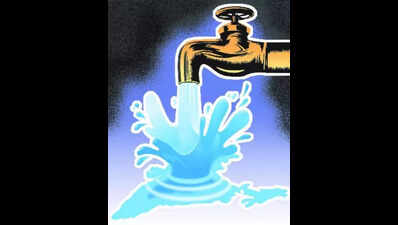New Delhi: To address the growing water demand of its expanding population, Delhi will see the construction of three new water treatment plants, senior officials of Delhi Jal Board (DJB) have said. These facilities will be located at Iradat Nagar, near Narela, Najafgarh in south-west Delhi, and Chhatarpur in south Delhi.Collectively, the new plants are expected to supply an additional 235 million gallons per day (MGD) of treated water to the capital. The Iradat Nagar and Chhatarpur plants will each have a capacity of 80 MGD, while the Najafgarh plant will have a capacity of 75 MGD. There are also proposals to source water for these plants from dams in Himachal Pradesh and Uttarakhand. Officials said a dam proposed on the Giri River in Himachal Pradesh is expected to supply 275 MGD of water to the capital. DJB has already provided Rs 214.84 crore to the Himachal Pradesh Power Corporation Limited (HPPCL) for the project. Similarly, DJB has also made financial commitments toward other proposed dams: Rs 8.1 crore for the Kishau Dam on the Tons River in Uttarakhand and Rs 7.7 crore for the Lakhwar Vyasi Dam on the Yamuna River, also in Uttarakhand.According to DJB officials, the city’s current population exceeds 2.5 crore. Based on the standard requirement of 50 litres per person per day, Delhi requires about 1,250 MGD of water. However, the current supply falls short at around 990 MGD.At present, the city’s nine water treatment plants together supply approximately 1,000 MGD. The new projects are part of a broader effort to bridge the supply gap and ensure consistent water availability amid rising demand.In recent years, several areas in Delhi have faced disruptions in water supply due to elevated ammonia levels in the Yamuna River, which hindered the operations of existing treatment plants. These ammonia surges resulted in periodic supply cuts, leaving some localities with little or no water.Last winter, the Wazirabad water treatment plant operated at half capacity due to contamination, while output from the Chandrawal plant was cut by 10%. The Haiderpur, Bawana, and Dwarka facilities also experienced reductions ranging between 5% and 10%, impacting large parts of the city.DJB’s 2023 Economic Survey noted only a marginal increase in the capacity of the city’s water treatment plants—from 943 MGD in 2022 to 946 MGD in 2023, a rise of just 0.31%. Despite supply challenges, Delhi govt continues to provide up to 20 kilolitres of free water monthly to households with metered water connections.To further strengthen the infrastructure, Delhi Jal Board will undertake a new Rs 300-crore project to lay an 11-kilometre pipeline. This initiative aims to mitigate intermittent water supply issues stemming from high ammonia levels in the Yamuna. The planned conduit will run from the Haiderpur Water Treatment Plant to the Wazirabad barrage, with work underway on detailed specifications and cost estimates.






